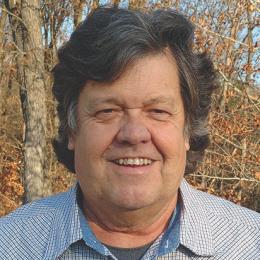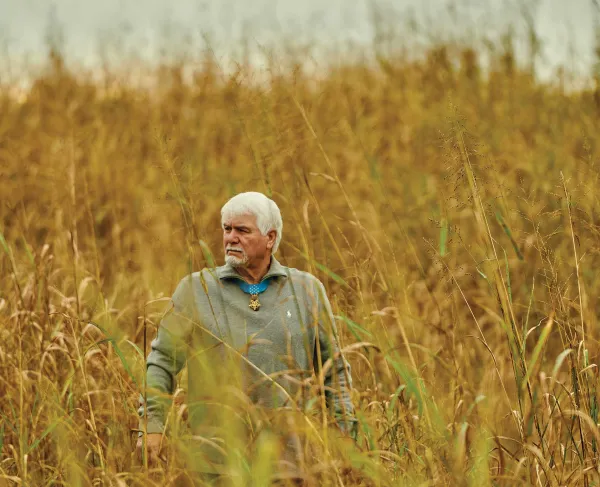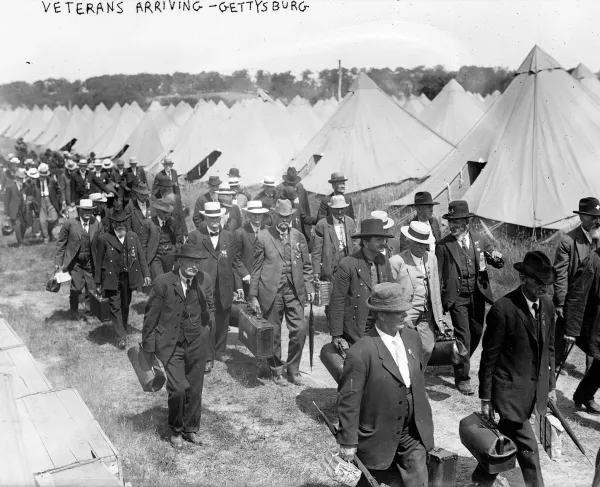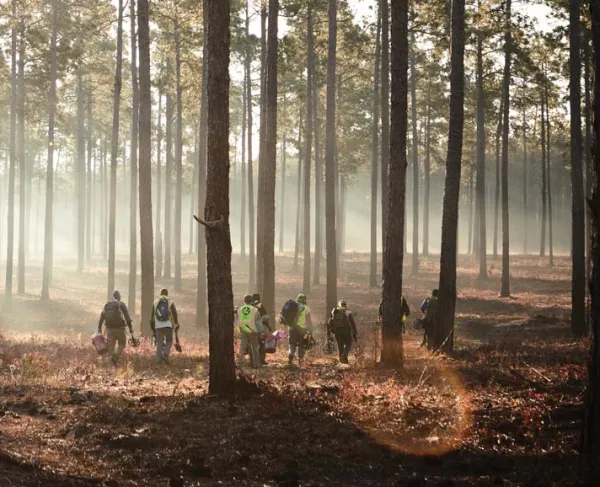When the Devil Dogs Take the Field
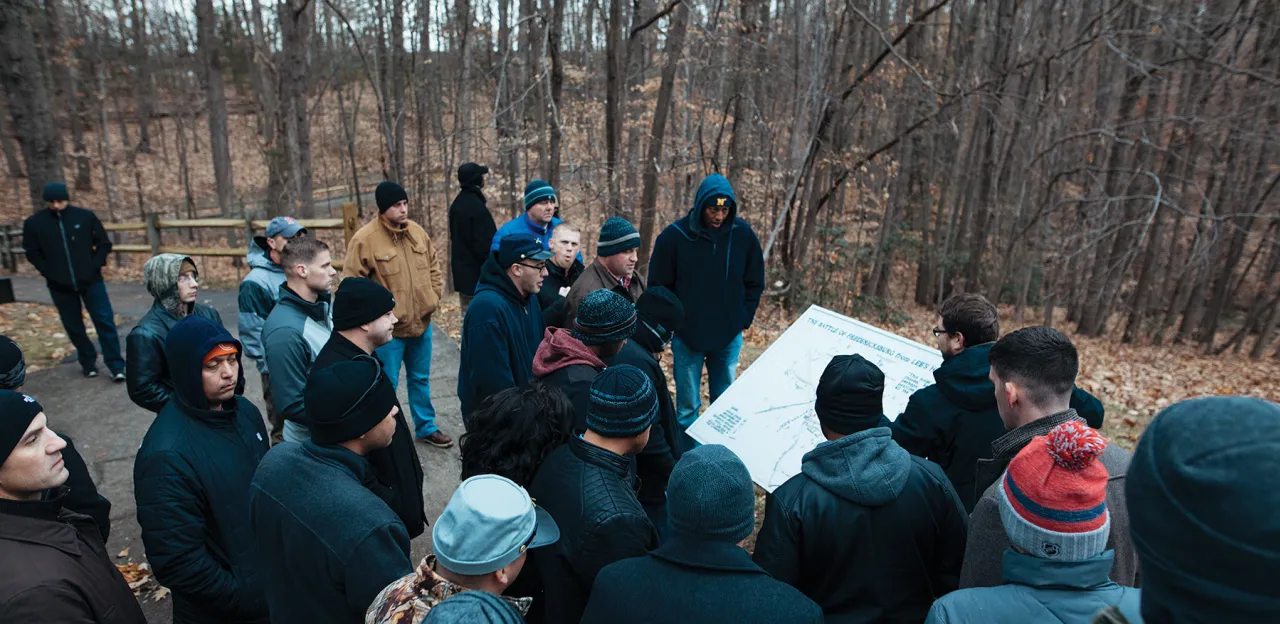
By 10:30 a.m., on June 9, 1863, the Battle of Brandy Station had been underway for six hours, but the most important high ground in the area, Fleetwood Hill, was almost deserted.
Before dawn, it had been home to the headquarters of Confederate Maj. Gen. J.E.B. Stuart. But when the cavalry battle began about two miles northeast at 4:30 a.m., Stuart and the headquarters command rushed forward to direct the fighting. The tents were struck, the baggage wagons dispatched to safer quarters in Culpeper and two regiments previously assigned to guard the hill rode off to protect that line of march.
Maj. Henry B. McClellan, Stuart’s 22-year-old adjutant, was all but alone on Fleetwood Hill, save for a few couriers who were relaying messages back and forth to the battle front and other positions. The most dominant topographical feature —the key to controlling the position and winning the battle —was undefended. The only weapon in McClellan’s sight was a lone six-pound howitzer, withdrawn from the fighting line early to resupply after problems with imperfect ammunition.
A courier arrived warning of another Federal advance. As McClellan peered in the opposite direction of the fighting, toward Brandy Station, he could see a large column of Federal cavalry advancing. He saw that they would reach the undefended station in mere minutes, and then it was simply a matter of crossing the tracks and the road and riding up the hill.
“Matters looked serious!” McClellan wrote in The Life and Campaigns of Major-General J.E.B. Stuart, published in 1885. What was he to do?
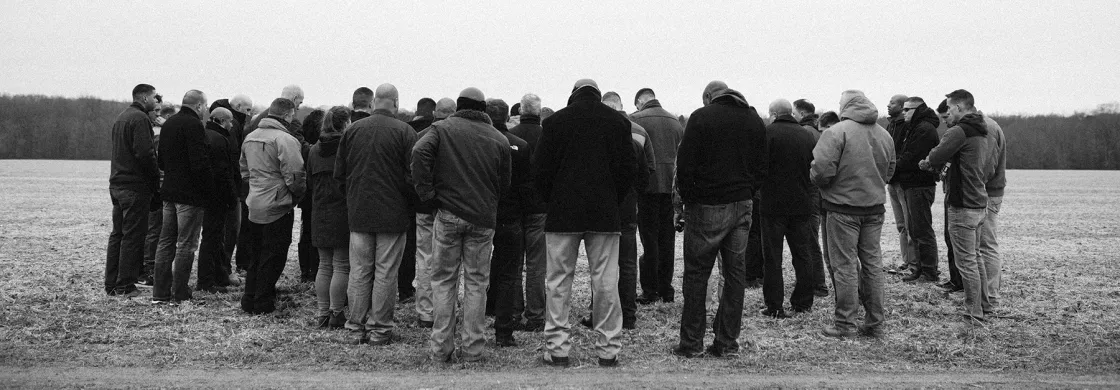
Putting Boots on the Ground
Now it is 2018 —a temperate February 22 —and on Fleetwood Hill, Marine instructor Phillip R. Gibbons faces 60 Marine gunnery sergeants, all with 12 to 15 years in the service, many of them combat veterans.
Gibbons, a task analyst at the College of Enlisted Marine Education, Marine Corps University, Quantico, Va., has just described McClellan’s predicament, with no small amount of drama. Now he wants answers —and fast —from his students, each of whom figuratively stands in McClellan’s shoes.
“Major McClellan!”Gibbons barks, “What are your orders?”
Putting Marines in McClellan’s shoes to test and teach decision making skills under stress is a central theme in military “staff rides”that unfold at battlefields all over the country and even abroad.
Brandy Station, a property saved and owned by the American Battlefield Trust, is a favorite for the Marine Corps University at the Quantico Marine Base in Virginia.
But other fields of conflict are frequently used, too —including Trust-owned sites like Cedar Mountain and Fredericksburg, where photographer Zach Anderson captured the the 2nd Marine Maintenance Battalion out of Camp Lejeune, N.C., in December 2017.
At Brandy Station, where he conducts up to a dozen staff rides each year, Gibbons is assisted by a team of civilian and active duty staff instructors. Back in 2012, he brought 700 second lieutenants on one ride, dividing them into smaller units. Now Gib- bons brings smaller groups, having found that to be more effective and less of a logistical challenge.
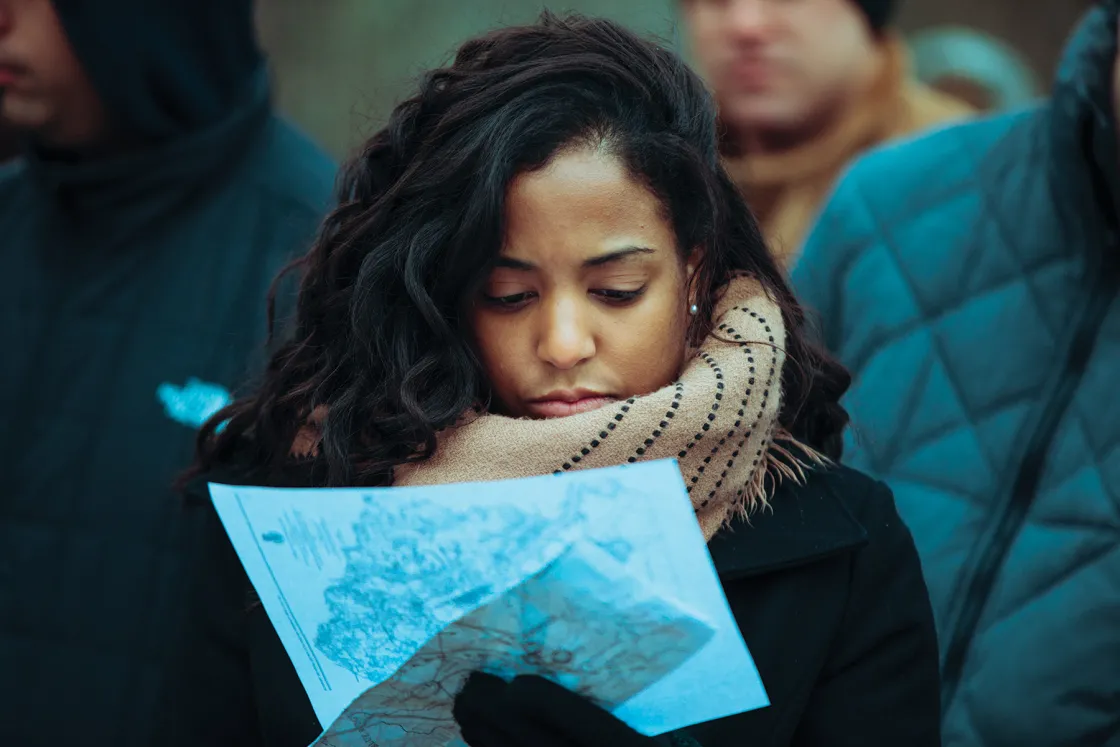
An Unmarred Landscape and a Fresh Canvas
Although the Battle of Brandy Station was the largest cavalry battle of the Civil War, it is still overshadowed by the likes of Gettysburg, Antietam and others. With most students unaware of the battle’s details, Gibbons is working on a fresh canvas when he prompts his modern Marines to design their version of McClellan’s plan of action.
“There’s a huge variety of responses,”Gibbons said in an interview. “In fact, every time I go out to Brandy Station and do this, I hear at least one new and different response. Every time, and I’m there myself with different staff rides and tours at least six times a year.”
For the purpose of staff rides, not all battlefields are created equal. Brandy Station has another major advantage besides its comparative obscurity —its preservation. As Gibbons’s troupe stands on Fleetwood Hill, the terrain that spreads out before them is largely unchanged from what McClellan saw. The train station is still in view. The rail line is still there, as is the road to Culpeper.
“When you get to a place like Brandy Station, where the terrain looks like it did back when the Civil War was fought, you get a feel for where to place troops, and how far apart, and basic decisions like those,”said Lt. Gen. Richard P Mills, USMC (Ret.), president and chief executive officer of the Marine Corps University Foundation. “That’s the real value of preserved battlefields for our training.”
“I can’t tell you how many hundreds of Marines I’ve had out there on that hill,”Gibbons said. “It’s great, because when I talk about it, they can see it. A whole new level of learning occurs out there, because you’ve got a three-dimensional battlefield. You can see why commanders made the decisions they made.”
Preservation Breeds Education
The Brandy Station Battlefield could have been obliterated. It could have become Elkwood Downs, a vast business and residential complex sprawled over 1,500 acres, including core battlefield land. It could have been a Formula One racetrack.
But after a decade of fighting one of the longest, hardest fights in the history of modern Civil War battlefield preservation, the preservationists won, thwarting the development plans and the race track. The American Battlefield Trust and its predecessor organizations began to acquire land at Brandy Station in 1997. Since then, the Trust and its partners have saved more than 2,000 acres in almost a score of different acquisitions.
When Gibbons first started taking Marines to Brandy Station, he didn’t take them to the crest of Fleetwood Hill. It was still privately owned, and a mansion occupied the high ground. So Gibbons kept his students below the heights on land owned by the Brandy Station Foundation. In 2013, however, the Trust bought the 56-acre hilltop property and home and, by 2015, had removed the mansion and cleared the hill. Gibbons now teaches on the very ground where McClellan stood, pondering his predicament:
“They were pressing steadily toward the railroad station, which must in a few moments be in their possession,”McClellan wrote. “How could they be prevented from also occupying the Fleetwood Hill, the key to the whole position? In point of fact there was not one man upon the hill beside those belonging to [Lt. John W.] Carter’s howitzer and myself, for I had sent away even my last courier, with an urgent appeal for speedy help. Matters looked serious! But good results can sometimes be accomplished with the smallest means. Lieutenant Carter’s howitzer was brought up, and boldly pushed beyond the crest of the hill; a few imperfect shells and some round shot were found in the limber chest; a slow fire was at once opened upon the marching column, and courier after courier was dispatched to General Stuart to inform him of the peril....”
Carter’s lone gun prompted the Federal forces to pause and evaluate the threat, giving Stuart time to send troops back to defend Fleetwood Hill. As they arrived, Carter’s gun, now entirely out of ammunition, was withdrawing, and Union troopers were advancing up the hill.
A furious clash ensued, and the entire battle shifted to Fleetwood Hill, which was taken by the Union forces, then lost, then retaken and finally lost in a bloody, dust-filled melee of slashing sabers, wild-eyed bucking horses and erupting firearms. The battle ended with the Confederates holding the hill, but they had just barely avoided defeat.
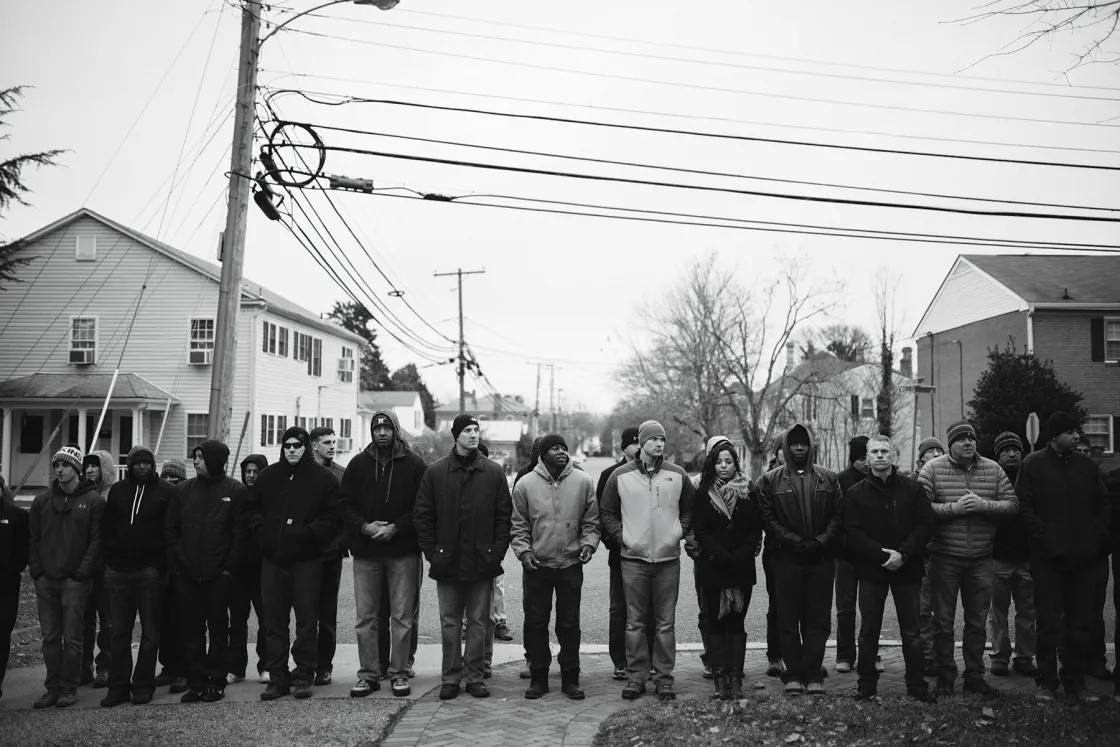
Living Classroom and Potential Park
As Gibbons presses his students for decisions, it’s not usually a matter of having a right or wrong answer. He evaluates with his gunnery sergeants the responses they come up with, analyzing the potential consequences in the face of fast-changing, chaotic combat.
The technologies of modern warfare, of course, are much different than those of the Civil War. But many aspects are fundamentally the same. For Gibbons’s students, the lessons of history are easier to visualize and more beneficial when they can stand on the actual ground.
Although that training comes in many forms, the most common type is what Gibbons does, the staff ride as a formal and rigorous training exercise in three phases: a detailed preliminary study of a battle or campaign, an extensive visit to the battlefield or campaign sites and an integration of the lessons learned from both.
There is no formal park at Brandy Station, so Gibbons and his students are often on their own as they go around the battlefield. A proposal to create a Brandy Station–Cedar Mountain State Park from the donation of battlefield properties currently owned by the American Battlefield Trust and the Brandy Station Foundation to the Commonwealth of Virginia is under consideration by the legislature in Richmond. The plan has gained significant support in the local community, leading to the creation of the Brandy Station and Cedar Mountain State Park Alliance to advocate for its passage.
The Marines are on board too. “When I heard about the initiative to create a Virginia state park at Brandy Station and Cedar Mountain, I became an instant supporter,”Mills wrote in a Richmond Times-Dispatch op-ed. “Establishing a state park will make both battlefields far more accessible and inviting to the public at large.”
But until that park is created, Gibbons depends on the assistance of the Brandy Station Foundation, which he says has been a terrific host.
“They’ve always said ‘yes,’100 percent of the time,”Gibbons said of the foundation. “One time, they had a cookout for the Marines.”Gibbons commonly arranges with the foundation to open the Graffiti House at Brandy Station, where they meet before the tour and then return to review what they’ve learned on the battlefield.
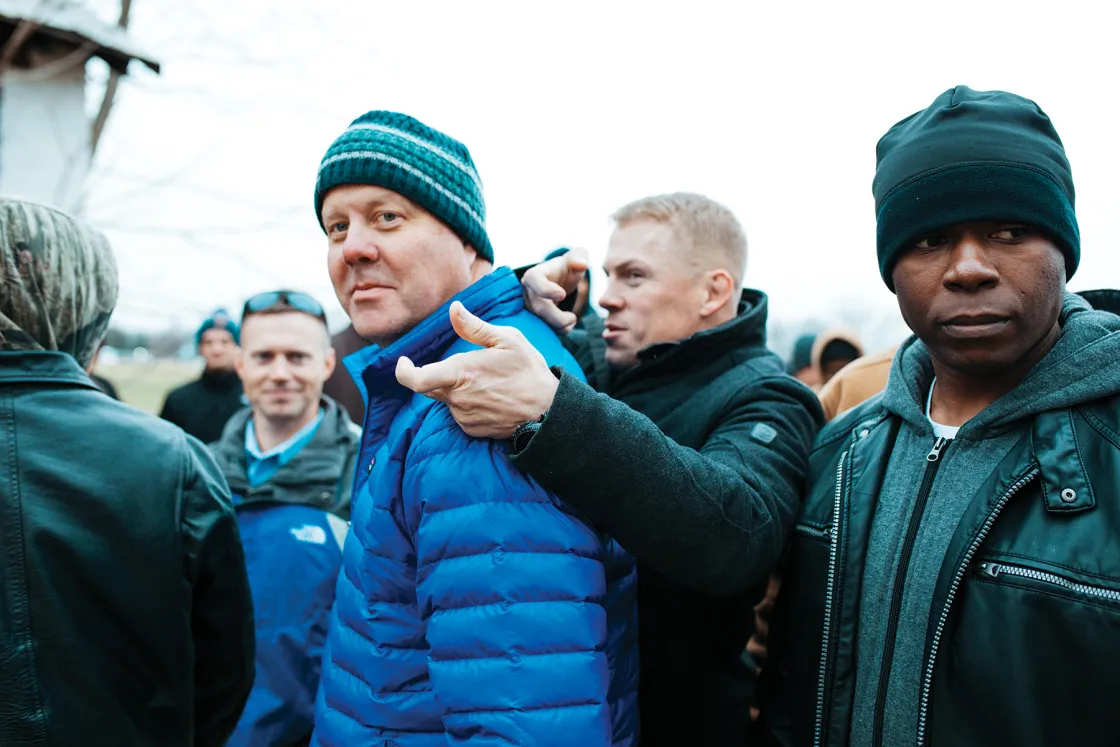
A Military Tradition
The battlefields at Chancellorsville and the Wilderness were the birthplace of modern military battlefield training. They were wholly unprotected battlefields in 1920, even though federal battlefield parks existed at Gettysburg, Antietam, Shiloh, Chickamauga/ Chattanooga and Vicksburg and other locations. A citizens group led by prominent veterans of both sides raised money in the 1890s, bought thousands of acres of the Virginia battlefields and offered them for free to the federal government, but the offer was rejected.
The colorful U.S. Marine Corps Gen. Smedley Butler, twice awarded the Medal of Honor, staged an elaborate reenactment of the Battle of the Wilderness on the first weekend of October 1921 to draw attention to the battlefields and encourage their preservation.
“It will be the biggest show any military crowd has ever pulled off in the U.S. in peace times,”Butler promised. The Marines came with troops, airplanes, dirigibles, 37mm guns, 3-inch Stokes mortars, machine guns and 75mm and 150mm French guns that weighed 19 tons each and had to detour around some bridges to get there. Planes strafed enemy “battleships”outlined with chalk near Wilderness Run. Hordes of visitors flocked to the noisy scene, including President Warren G. Harding, who spent the night in a tent on the battlefield.
The Marine camp covered the ground around Ellwood Manor at the Wilderness, and when Butler saw the marker for Stonewall Jackson’s arm in the family cemetery, he questioned its veracity and ordered Marines to start digging.
“Butler dug it up, to make sure it was there, reburied it in a box, and —characteristically—put a bronze plaque to himself atop the 1903 marker to commemorate his exhumation,”said Robert K. Krick, retired historian at Fredericksburg and Spotsylvania National Military Park.
Butler’s reenactment was successful on several fronts. It promoted the military. It built momentum for the protection of the area’s battlefields, leading to legislation in 1926 that created the national military park.
And out of Butler’s grand demonstration also came more formalized methods of using battlefields for training and study, which led to the modern staff ride.
A Wealth of Opportunities
“All of the battlefields in the Washington, D.C.–area and from Richmond to Philadelphia are used extensively by the Marine Corps University, which teaches everybody from sergeants to lieutenant colonels,”Mills said.
In other parts of the country, other battlefields are used. “If those gunnery sergeants are at Camp Pendleton in California, then they go to the San Pasqual Battlefield, a Mexican War battlefield in Escondido,”Gibbons said. “If they’re in Okinawa, they tour the Okinawa battle sites from World War II.”
Each year at Chickamauga and Chattanooga National Military Park, NPS historian Jim Ogden conducts “one of the more interesting staff rides that I do each year,.”as part of a U.S. Army training program for military officers in partner nations in Central and South America. “The course is conducted in Spanish”by a translator with a headset, Ogden said. “All the students have earpieces, and the translator turns what I say in English into Spanish for them,”and vice versa.
Chancellorsville and the Wilderness are also still used by the military for staff rides. The American Battlefield Trust has saved much core battlefield land at Chancellorsville along Route 3 outside Fredericksburg, including much of the first day’s battlefield and the site of Stonewall Jackson’s epic flank attack on the second day.
But Gibbons prefers Brandy Station, even though it’s 18 miles farther from Quantico.
“If your desired outcome is an immersive experience, you need to have preserved ground without a lot of modern intrusions,”Gibbons said. “I know a lot of Marines can and do go out and study Jackson’s flank attack at Chancellorsville now that they can walk the ground. It’s great that we’ve saved those places. But the noise from the traffic going through there on Route 3 makes it hard to hear. So, Brandy Station is kind of my favorite place to go.”
